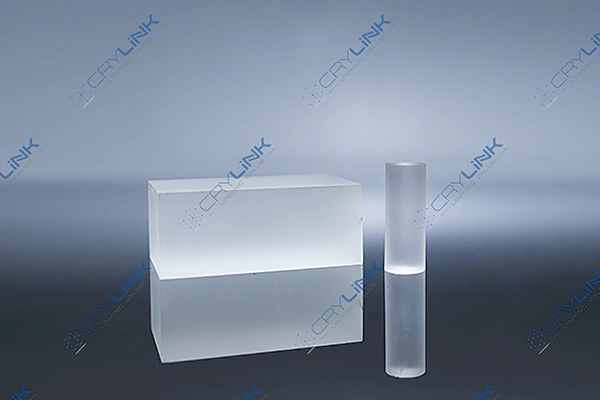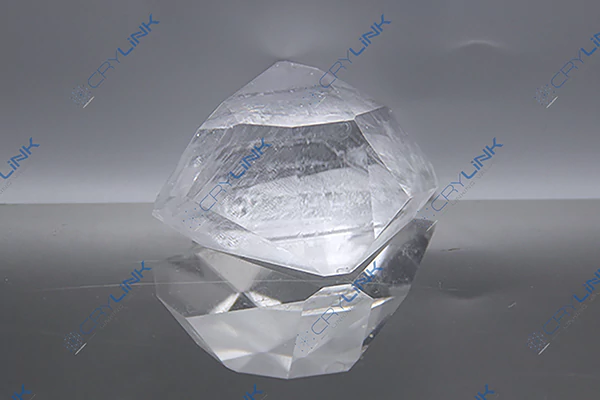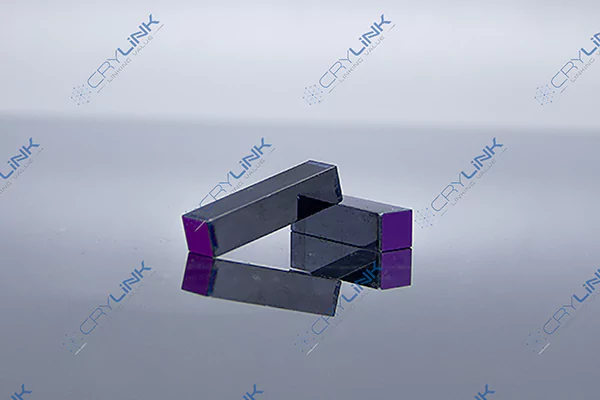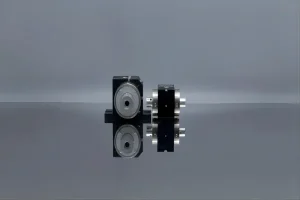Understanding Nonlinear Optical Crystals
What are Nonlinear Optical Crystals?
Nonlinear optical (NLO) crystals are unique materials that have taken the forefront in modern photonics and optical science. These crystals aren’t like your ordinary optical materials. Where traditional materials maintain a linear relationship between the electric field of light and its polarization, NLO crystals break this mold. Instead, when high-intensity light—such as that from a laser—interacts with these materials, they can induce a myriad of effects, altering properties like frequency, phase, and polarization of the light.

At a deeper level, these alterations in light properties are due to the peculiar internal structures and electron configurations of the NLO crystals. These attributes make them vital in a wide range of applications, from communication systems to advanced imaging technologies.
How do they work?
To truly grasp how NLO crystals work, it’s crucial to understand the behavior of light as it passes through different mediums. In everyday scenarios, when light, say from a flashlight, enters transparent materials like glass or water, it retains most of its original properties upon exit. This phenomenon is attributed to the linear optical nature of such materials, where the output (transmitted light) is directly proportional to the input (incident light).
However, nonlinear optical crystals dance to a different rhythm. When intense light enters these crystals, the internal structure of the material interacts with the light waves in complex ways. This interaction is “nonlinear,” meaning that the output isn’t directly proportional to the input. As a result, the exiting light can manifest new properties.

For instance, an NLO crystal might take in a beam of red light and emit a beam of green light, effectively changing its color. Such changes aren’t due to any external filters or additives but are a direct consequence of the crystal’s unique ability to manipulate light at a fundamental level.
The Birth of Nonlinear Optics
The Foundations of the Field
The journey of nonlinear optics embarked upon an unprecedented path during the early 1960s. Researchers, engrossed in the mysterious world of optics, stumbled upon a groundbreaking phenomenon: the frequency-doubling effect.
In simple terms, this meant that light, when channeled through specific crystal structures, emerged with its frequency doubled—or equivalently, its wavelength halved. This was not just a minor discovery; it was an eye-opener, revealing that under certain conditions, light could be manipulated in ways hitherto unknown.

The Pioneering Experiments
Behind this foundational discovery were a series of meticulous experiments using lasers, which had recently been invented. These early lasers emitted coherent light that allowed scientists to explore the intricacies of light-matter interactions in more depth. By focusing intense beams of light onto particular crystals, researchers began noticing unexpected light outputs. Instead of the same color of light exiting the crystal, a new, different color emerged.
This transformation was linked to the crystal’s ability to mix frequencies, producing light of a different frequency from the incoming beam. This pioneering work paved the way for further research, leading to a broader understanding of nonlinear optical processes and the vast potential they held.
Applications: Where Nonlinear Crystals Shine
Frequency Conversion
Unlocking New Frequencies: The Broad Spectrum Approach
Nonlinear optical (NLO) crystals are pivotal in frequency conversion. Traditional light sources offer a limited range of frequencies. However, when light travels through NLO crystals, the ordinary is transformed into the extraordinary. It enables the generation of frequencies that aren’t directly obtainable from conventional sources. This transformation plays a crucial role across industries.
For instance, in telecommunications, it aids in optimizing bandwidth usage. Similarly, in medical imaging, it helps in achieving clearer visualizations of internal structures, which could be the difference between timely detection and missed anomalies.

Lasers: Enhancing Capabilities
Beyond Basic Lasers: The Multifaceted Powerhouse
NLO crystals have dramatically expanded the horizons of laser technology. Basic lasers have their limits in terms of wavelength range. However, with the integration of nonlinear crystals, lasers become versatile tools, emitting a spectrum of wavelengths previously deemed unattainable. This spectrum expansion is transformative. In medicine, it paves the way for non-invasive surgeries and enhanced diagnostics. Meanwhile, in manufacturing, it provides unprecedented precision, allowing for the creation of intricate and detailed components with minimal error margins.
Pulse Compression
The Power of Compact Pulses
NLO crystals stand as guardians of efficiency in high-intensity laser applications. Through pulse compression, these crystals enable the shortening of laser pulses while preserving their potent energy. The benefit? An elevation in power density. In realms like laser-driven particle acceleration, this compression is not just beneficial—it’s indispensable. It facilitates greater control and efficiency, leading to accelerated research outcomes and technological advancements.
Optical Signal Processing
Advanced Data Transmission: Racing at the Speed of Light
Our world thrives on data. With an increasing dependency on rapid information exchange, optical signal processing, aided by NLO crystals, emerges as the knight in shining armor. By converting electronic data signals into optical ones, these crystals ensure data travels at light speeds, ensuring real-time communication, faster downloads, and seamless streaming.
Holography and Imaging
Clearer, Crisper Images: Delving into the Depths of Detail
The world of imaging has been revolutionized by NLO crystals. They’ve birthed a new era of holography, enabling us to see the world in unparalleled three-dimensional clarity. Gone are the days of two-dimensional constraints. Today, thanks to NLO crystals, holographic images burst forth in rich detail, capturing nuances, and depth with breathtaking accuracy, revolutionizing fields from entertainment to advanced scientific visualization.
The Future of Nonlinear Optical Crystals
Exploring New Frontiers: The Era of Quantum and Beyond
The journey into the depths of nonlinear optical (NLO) crystals has only just begun. As research gains momentum, the horizon expands, revealing promising prospects. The current trend toward miniaturized tech devices, combined with the explosive potential of quantum computing, is creating a voracious appetite for highly efficient NLO materials. Imagine a world where data transmission is almost instantaneous, and optical processes are streamlined to perfection. This is the world that NLO crystals promise, a world where the bounds of optical physics are continually redefined.
Challenges in NLO Crystal Application: The Mountains to Climb
The journey, while exciting, isn’t without its share of challenges. Synthesizing large, immaculate NLO crystals free from defects is akin to finding a needle in a haystack. Moreover, ensuring these crystals maintain their integrity and performance under the glaring intensity of high-powered light beams remains a formidable task. These are the mountains researchers and scientists are aiming to climb.
Potential in Medical and Space Exploration: Breaking Boundaries

Beyond conventional applications, the potential of NLO crystals in fields like medicine and space exploration is immense. These crystals could revolutionize non-invasive medical imaging, providing detailed insights into the human body without the associated risks of radiation or invasive procedures. In space exploration, they might offer enhanced communication systems, bridging the vast cosmic distances with unprecedented clarity and speed, enabling us to venture further and communicate more effectively.
Environmental Impacts and Sustainability: Treading Lightly
As with all technological advancements, there’s a footprint to consider. The synthesis and utilization of NLO crystals come with environmental considerations. From the extraction of raw materials to the disposal of used components, the life cycle of these crystals must be viewed through the lens of sustainability. Efforts are underway to develop eco-friendly synthesis methods and to ensure the long-term sustainability of NLO crystal production, ensuring that our technological strides don’t come at the planet’s expense.
Conclusion
The intricate universe of nonlinear optical crystals beautifully marries nature’s enigmatic wonders with mankind’s insatiable thirst for discovery and innovation. As we continue to unravel the mysteries of the optical realm, the indispensable role of these remarkable crystals becomes glaringly clear. They not only amplify the power and precision of today’s laser technologies but also lay the foundation stones for the groundbreaking quantum marvels that the future holds.
Their influence touches diverse domains, from healthcare to telecommunications, making life richer and more efficient. Like explorers standing on the brink of an uncharted territory, we are on the cusp of myriad discoveries with NLO crystals lighting our path. The narrative of these crystals, bursting with limitless potential and aspirations, is just unfolding, promising a future radiant with possibilities.
FAQs
- What are Nonlinear Optical Crystals?
- They are crystals that interact with high-intensity light in ways that can change the light’s basic properties.
- How do NLO crystals differ from regular crystals?
- Unlike regular crystals, NLO crystals can produce new light beams with different properties when exposed to intense light.
- Why are NLO crystals important in lasers?
- They allow lasers to achieve a wider range of wavelengths and enable applications like pulse compression.
- What role do NLO crystals play in imaging?
- They enable the production of high-resolution, three-dimensional holographic images.
- Are there challenges in using NLO crystals?
- Yes, synthesizing large, defect-free NLO crystals and ensuring their stability under intense light are current challenges.







